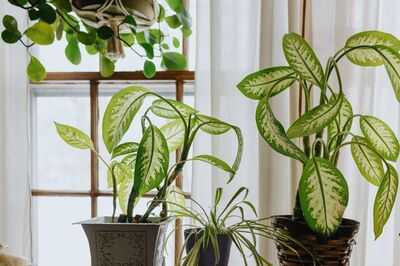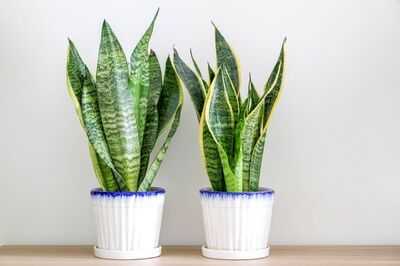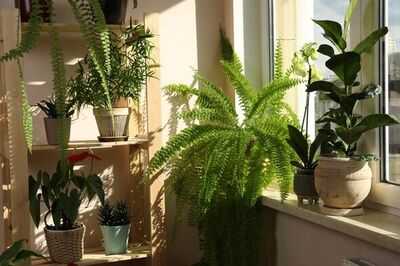
Mould poses a persistent challenge for many households during winter and seems almost impossible to eradicate. While chemical cleaning agents, white vinegar, and even salt are common solutions for fighting mould indoors, there is a better alternative. Horticultural experts recommend vibrant houseplants as an effective remedy. These plants can significantly reduce humidity levels inside a room, naturally preventing mould growth. Mould problems tend to worsen as temperatures drop, leading to health risks such as breathing issues, allergic reactions, and even asthma. Therefore, swift action is crucial.
Selecting the correct plant with suitable maintenance needs remains vital for keeping mould away, particularly in steam-heavy zones such as bathrooms or kitchens. Gardening expert David Domoney has identified four "mould buster" houseplants that make ideal additions to any home.

In a blog post, David said: "Using houseplants in rooms prone to mould is a natural way of controlling humidity levels. This is due to the plants absorbing moisture through the leaves."
He added, "This is a win-win, because not only will you reduce the risk of mould, but you'll also have stunning greenery to enjoy in your home."
Houseplants that reduce mouldEnglish ivy
This moisture-loving plant thrives in bathrooms or kitchens. English ivy tackles airborne mould in damp environments and significantly improves air circulation.
However, it is also poisonous to pets, so it should be placed well out of their reach.
As for how to look after English Ivy, David pointed out: "It'll grow happily with plenty of bright, indirect light with moist but well-drained soil. Water regularly, checking the top inch of soil and waiting until it is dry to water again."
Palms
Palms are ideally situated in vacant corners of your home due to their lavish, feathered, leafy structure.
They not only deter mould and act as natural dehumidifiers but also do wonders for purifying the air. With a variety of palms available, there's one to fit every space.
Additionally, they're low-maintenance, requiring watering just once a week or every 10 days.
Place them near a west or south-facing window in winter for bright, indirect light.
David pointed out: "The structure of palms adds elegance to the space, whether in a dining room, living room or adding some greenery to bathrooms. Due to their height, they can be a great houseplant to replace Christmas trees after the festive period is over."
Snake plant
The snake plant is praised as the top choice for homes troubled by excess dampness. David emphasises its tolerance to both placement and room conditions.
It thrives in sunny spots and is adaptable to both humid and dry environments.

This plant variety also helps counteract the harmful effects of trichloroethylene, found in cleaners, which can cause headaches or dizziness.
Peace lilies
Peace lilies rank among the most popular houseplants, boasting striking white flowers and vibrant green foliage.
These plants flourish in indirect light conditions, making them ideal for locations distant from windows.
David commented, "Perfect for warm, humid environments, they will appreciate watering when the top of the soil dries out. Their love of humid spaces makes them great for placing in areas prone to mould."
You may also like

'No deliberate exclusion': Taliban foreign minister Amir Khan Muttaqi holds another presser; women journalists present

UP's law and order has become zero: Akhilesh Yadav

SC seeks Centre's reply on plea to ensure life support facilities in ambulances

Samantha Ruth Prabhu shares her journey towards living her highest self

Apples will last 6 months longer if stored in 1 kitchen spot







